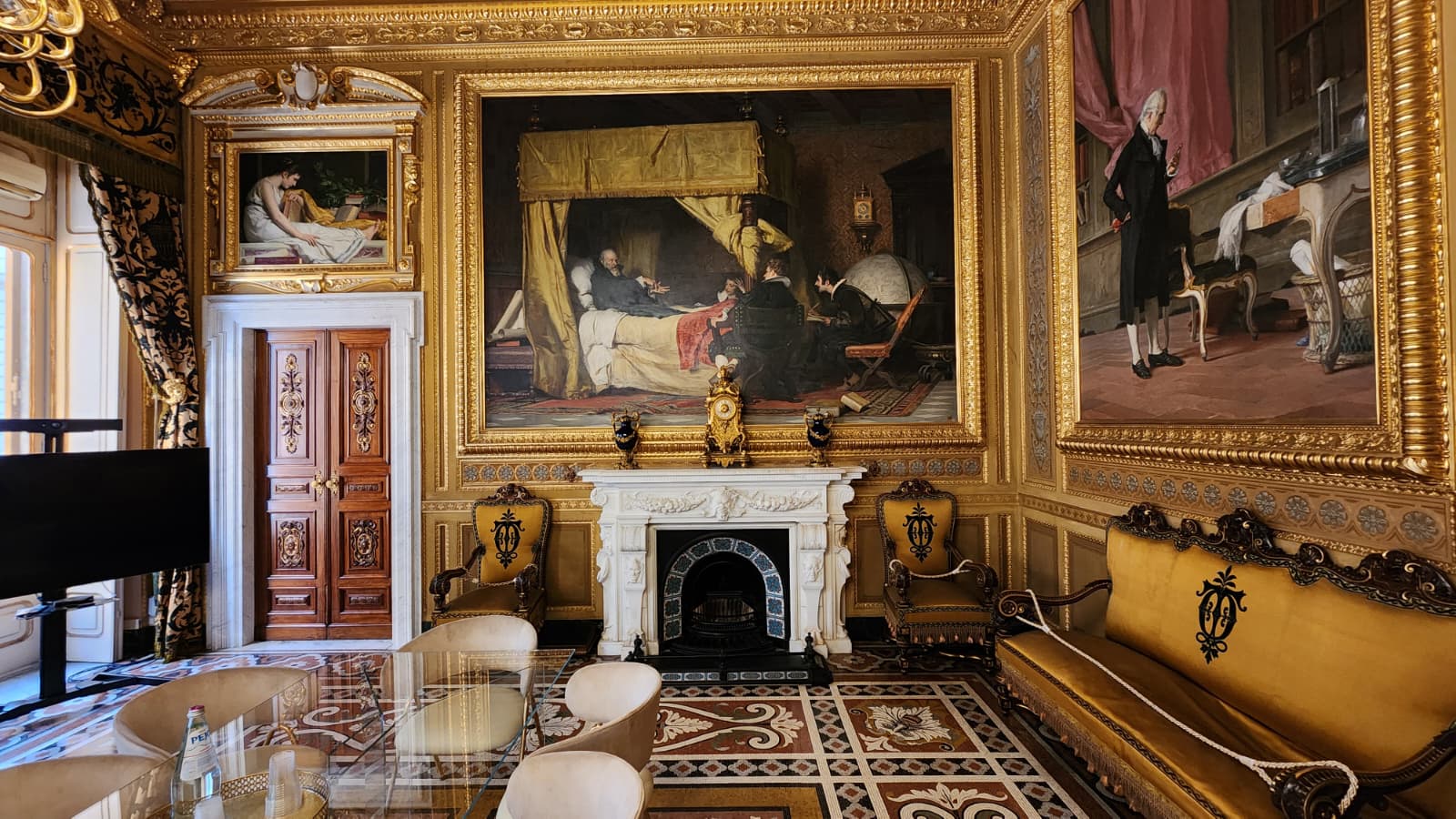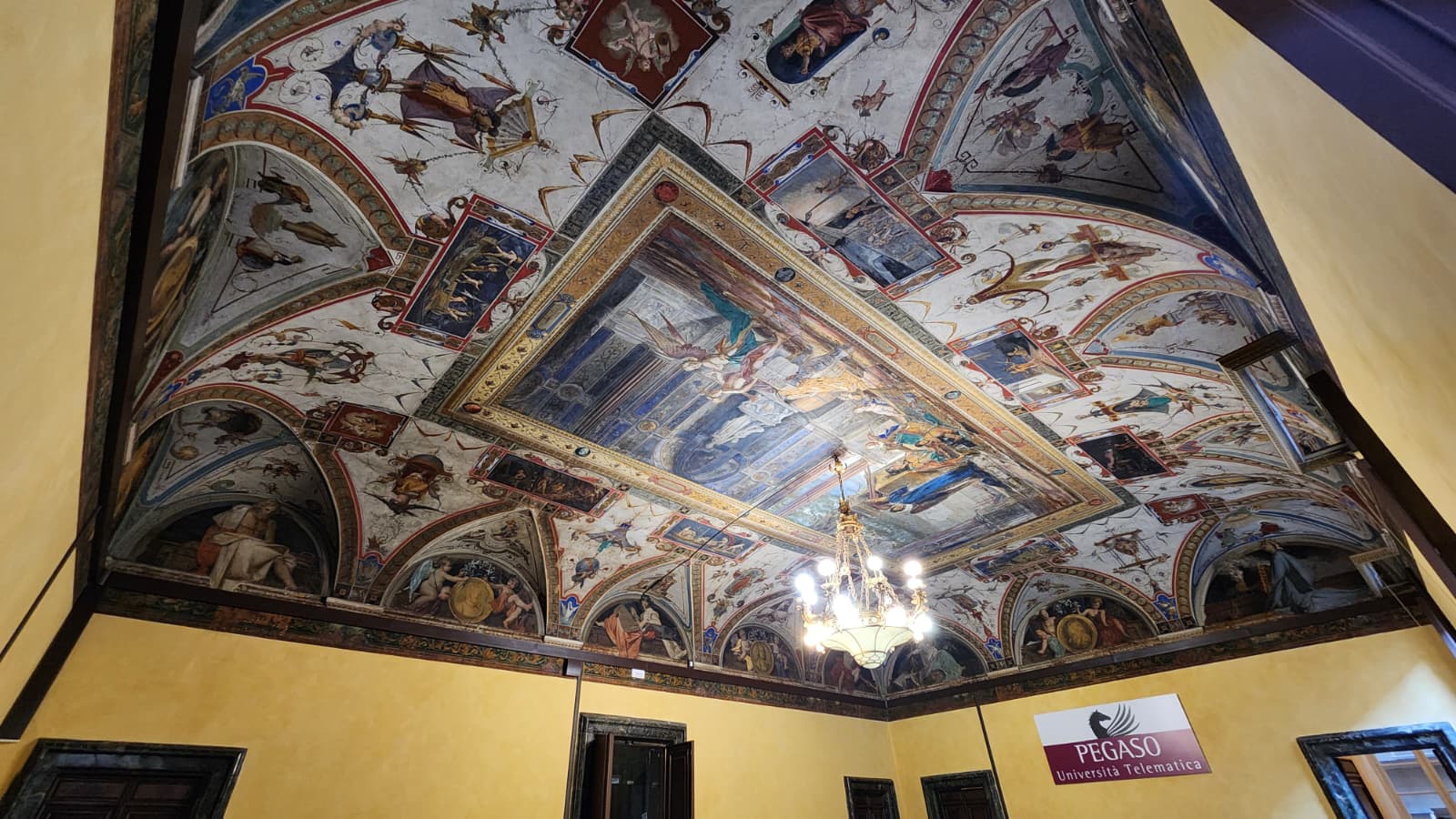In Genoa , the fall edition of Rolli Days 2025, dedicated to the theme Genoa and the Nineteenth Century. Art through Change, closed with a more than positive balance: about 59,000 visitors participated in the days that, between Friday, October 17 and Sunday, October 19, enlivened the city with routes, visits and extraordinary openings. A result that confirms the initiative’s role as a leading event in Genoa’s cultural offerings and a symbol of a city in constant dialogue with its artistic and architectural history.
The three-day event offered an unprecedented edition, which for the first time also extended its gaze to the places and buildings that, in the19th century, marked Genoa’s profound urban and social transformation. Alongside the famous sixteenth-century palaces inscribed in the Rolli system, the public was able to discover the sites that were the protagonists of nineteenth-century modernity, in an itinerary that combines past and future. Visitors, accompanied by science popularizers, explored 42 sites open to the public, living an experience that interweaves art, history and urban identity. From the new city routes and symbolic squares, such as Via Roma and today’s Largo Pertini, to the masterpieces of Romantic taste and the monumental architecture of Staglieno Cemetery, the event offered a true journey through time, discovering a century of ferment, innovation and change.
Interest in this edition was amplified by the opportunity to visit, for the first time, the sumptuous Palazzo Orsini on Via Roma, now the Genoese headquarters of the Coutot-Roehrig company. The building represents one of the finest examples of aristocratic residences of the second half of the 19th century in Genoa and testifies to the refined artistic and social culture of the period. The history of Palazzo Orsini is linked to the figure of the lawyer Tito Orsini, who wanted to celebrate his social prestige by relying on the talent of Nicolò Barabino, one of the most important Genoese artists of the 19th century. Between 1860 and 1870, Barabino devoted himself to the decoration of the palace, creating frescoes, furniture, and paintings that made it an authentic shrine of Barabino art. Although part of the decorations were lost during the 1943 bombings, the original charm of the mansion remains intact. Particularly important is the Salone della Scienza (Hall of Science), where Barabino frescoed episodes related to the history of science (Galileo suffering in his room at Arcetri, Romans breaking into the house of Archimedes, monks mocking Christopher Columbus, Alessandro Volta in his study) and allegories of the various scientific disciplines, all to be read according to the key of Stoic philosophy (represented by a marble bust in the center of the room, above the entrance portalentrance, identified as Seneca’s bust) that emphasizes the arduous and obstacle-laden path to scientific truth. In addition, in the other rooms, Barabino also introduced stories of a secular nature (episodes from the Divine Comedy, the depiction of Cleopatra) painted in a style that anticipatesArt Nouveau, enriching the walls with allegorical figures dedicated to progress, science, and the great figures of history. The result is a residence that, even today, retains its evocative power intact, restoring the climate of a time when Genoa looked to Europe and the future.

The data collected confirm the strength of the Rolli Days audience: 66 percent of visitors come from Genoa, 25 percent from northern Italy and 10 percent from the rest of the country. The demographic analysis returns a varied picture, with 29% of participants aged between 56 and 65, 24% between 46 and 55, 32% under 45, and 13% over 65. This is a cross-sectional audience, showing how the initiative has succeeded in uniting residents, tourists, and art lovers in one shared experience.
The overall numbers in recent years testify to a steady growth in interest in the event. In 2025, in addition to the recently concluded fall edition, there were 99,550 visitors between late April and early May, 30,130 in February, and more than 10,000 in September for the extraordinary opening of 14 palaces. In 2024, the three editions totaled more than 228,000 total attendance, with peaks of 97,115 visitors in September and 70,896 in May. 2023 had also confirmed the positive trend, with 81,010 admissions in spring and 71,325 in autumn.
Thus, stable numbers that consolidate Rolli Days as one of the most important cultural events in the country, capable of combining historical popularization, heritage enhancement and civic participation.
The success of the event also lies in its ability to tell the story of a city in transformation. In this year’s edition, Genoa’s nineteenth century, a period of great economic and social change, found in the Rolli Days itineraries a narrative through images and places capable of telling the story of the birth of urban modernity. The inclusion of sites such as Palazzo Orsini, Staglieno Cemetery, Palazzo Lercari-Parodi with its nineteenth-century interventions on ancient frescoes or Palazzo Nicolosio-Lomellino where an important exhibition on Plinio Nomellini, among the greatest Italian painters of the late nineteenth century, is underway, highlighted the innovative force of the nineteenth century.

“Rolli Days continues to be a great success, which is renewed from edition to edition,” said Genoa Mayor Silvia Salis: “They have now become an indelible mark of our city’s cultural and tourist offer. For this edition, we immersed ourselves in the nineteenth century, a century that for the history of Genoa is all to be discovered. And I am happy to have been able to inaugurate this new appointment with the Rolli with a visit to some of the palaces together with the entire Council, with the valuable guidance of our councillor Giacomo Montanari. Culture and the enhancement of our priceless heritage are at the center of the thoughts and activities of this administration.”
“The success of this edition should be read under two indicators: the first is numerical (59 thousand admissions in two and a half days of opening, compared to more than 90 thousand over four days last fall) and the second is qualitative,” explains Culture Councillor Giacomo Montanari. “By quality, I mean not only the undoubted and now proven quality of the science popularizers from all over Italy, a Genoese excellence in the cultural professions, but also the exceptional spillover to citizens of new content, much of it previously unseen. To be able to transform the visiting experience into a ”toolbox“ to increase one’s awareness as a city dweller or visitor is to do training in heritage protection, knowledge and sharing. The Rolli days are therefore an exceptional training tool, as well as a successful event with significant economic returns. And this, I believe, can make a difference for the growth of the city and the country.”
 |
| Genoa, the Rolli Days of the Nineteenth Century closes with 59 thousand attendees. All the numbers from the event |
Warning: the translation into English of the original Italian article was created using automatic tools. We undertake to review all articles, but we do not guarantee the total absence of inaccuracies in the translation due to the program. You can find the original by clicking on the ITA button. If you find any mistake,please contact us.